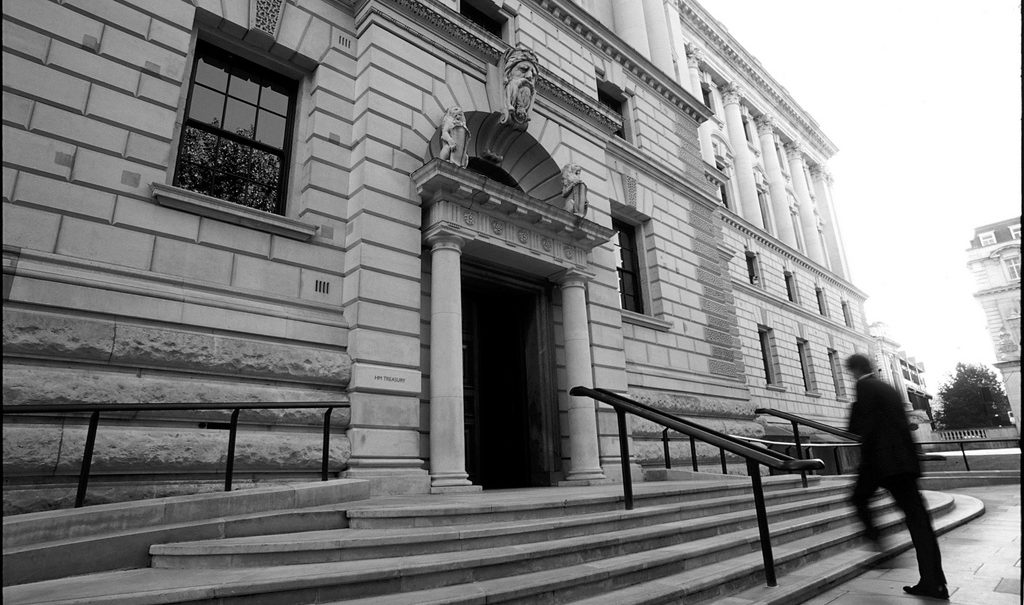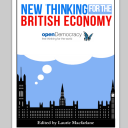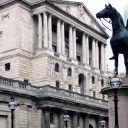Financing a Labour government

Image: HM Treasury, CC BY-NC-ND 2.0
There are essentially three ways of financing an ambitious Labour Government’s programme of public expenditure. These are through taxation, monetary credit creation, and the issue of debt securities. The sections below explain how each of these three methods works, and their respective limitations. Those limitations mean that, in the end, a Labour Government’s programme will have to be financed by some combination of these three methods. A final section suggests that financial stability should determine the degree to which any of these three methods should be used in financing a Labour programme.
Taxation
The first, and most obvious, way of paying for government expenditure, is through taxation. In most countries this covers the vast bulk of government expenditure. The remainder is the so-called ‘fiscal deficit’ that must be covered through monetary credit creation or the issue of debt securities. A programme of government expenditure in a given period that is covered by tax revenue, is called a balanced budget. Financing expenditure through taxation is a purely redistributive activity: the public in general are taxed and the money is paid back to the public that obtains incomes from government expenditure programmes (public services, health, education etc., and public investment). Business and property-owners then obtain the money as those incomes are spend on consumption goods, rents etc.
The idea of a balanced budget is very appealing to Conservatives, because it epitomises the virtues of thrift and ‘living within ones means’ that in their view makes for sustainable household budgeting. This is of course a public virtue that, on the whole, they themselves do not practice, because private means and the possession of wealth allow the rich to live beyond any earned income, and the home ownership so ardently promoted by Conservatives allows increasing numbers of the middle class to generate cash flow from the housing market by realising capital gains. Nevertheless, the government is, in this view, supposed to balance its budget. However, the balanced budget doctrine is inappropriate because it ignores the important part that government expenditure and financing play in maintaining the stability of the financial system, through the provision and absorption of liquidity and risk-free financial assets.
This balanced budget approach is often combined with two other doctrines that are founded on political prejudice rather than analysis of the way in which the economy works. The first is that taxation distorts prices, markets and incentives. If this argument is to be taken seriously, then its proponents should be advocating the abolition of the state, and all that that would entail. The possibility of getting rid of all these distortions is an anarchist dream. Even that would not be enough, since it would also be necessary to get rid of all monopolistic distortions of the price system, and that would be difficult, if not impossible, without a state to enforce competition. The policy issue is what distortions (such as free education or environmental protection) improve the functioning of society and the economy.
The other, related, doctrine is that taxation is an insupportable burden on business. But this need not necessarily be the case. This depends on the ‘incidence’ of taxation (who pays) and the programme of expenditure. A tax on wealth does not affect profits from production. In no way therefore does it reduce the incentives that profits provide to firms to invest. A tax on wealth that is used to build hospitals creates incomes for firms that build hospitals. Business circles on the whole actually like government expenditure, providing that someone else pays the taxes. The armaments industry is a particularly egregious example of this self-serving attitude towards public finance. Business too benefits from healthy, educated workers, whose capacities have been enhanced by public support, not to mention the subsidies given to employers in recent years through income support. Business also obtains revenues as welfare payments and public employees’ incomes are spent goods and services that the private sector provides.
Nevertheless, behind austerity lies the desire to reduce taxes on the rich. In combination with the doctrine of balanced budgets, this means reducing public expenditure. Fiscal austerity is therefore first and foremost a distributional argument. If this distributional argument could be ignored then a Labour Government would have no difficulty. However, the rich have power.
The other limitation of taxation is that the ability of a government to extract taxes from the economy (i.e., the ‘fiscal base’) is finite. Major expenditures, such as the war effort in the two world wars of the twentieth century, or financial operations, such as the nationalisations of the coal and steel industries and the railways by the Attlee government, were on a scale that was beyond being financed from taxation. Historically, balanced budgets have been rare. There is moreover a technical reason why government expenditure cannot be wholly covered from taxation, namely because tax revenue does not come in at exactly the same time as the government spends its (our) money. Tax revenues are usually bunched in the first quarter of each calendar year. Arrangements have to be made to finance public expenditure in the period before each New Year. These arrangements are the other two methods of financing public expenditure, monetary credit creation, and the issue of debt securities.
Monetary credit creation
Monetary credit creation is sometimes misleadingly called ‘printing money’. The term is misleading because governments on the whole do not pay in cash. Except for their remaining weekly-paid employees, who may receive a wage packet with banknotes and coins in it, virtually all government payments are by bank credit. What is called ‘printing money’ is, in today’s credit economy, the provision of loan or overdraft facilities by the central bank, the Bank of England. These come in the form of the creation of reserves at the central bank which are then transferred to commercial banks that receive government payments on behalf of their account-holders, teachers, pensioners, policemen, doctors, civil servants, and government contractors.
In recent years a view has emerged that such ‘monetisation’ of a fiscal deficit, through the creation of bank reserves, or even a parallel currency, is an effective way of financing that deficit. After all, the loan from the central bank may easily be made effectively non-repayable by being ‘rolled over’ or renewed on maturity, and any interest on the loan (minus the Bank’s costs) is added to the Bank’s profits which of course belong to the owner of the central bank, the government. In this way, monetisation costs the government and the tax-payer virtually nothing. This economical, apparently cost-free, method of financing government expenditure is of course attractive when public services, welfare and infrastructure are deteriorating in the face of austerity. But this low cost is only the case at the time of the expenditure. To understand the true efficiency of this kind of financing, it is necessary also to consider the consequences of such financing. In particular, it is necessary to understand how that money would be absorbed by the economy.
Supposing that a Labour government decided to raise expenditure on public services, the NHS and infrastructure by a total of 5% of GDP in each year of its five-year administration, and ‘monetised’ this extra expenditure. After five years, the total money stock of the country would have increased by 25% of GDP. Supposing that economic activity accelerated (in accordance with Keynesian multiplier principles) up to 3% per year, on average over the five year period. One could make the case that, with GDP 15% higher at the end of this Labour administration, ‘normal’ economic activity would absorb in the usual exchange and financing 15% out of the 25% of the increase in the money stock. But what would happen to the rest? Where would it go?
To answer this question it is necessary to look at how money circulates in the economy. The essence of a profit-making, capitalist economy, is that firms make profits and, in this way, accumulate monetary savings or reserves. Not all of course make the same rate of profit: many small businesses operate at a loss, or just break even. It is large corporations that have the highest rates of profit, due to their market power and their control over resources through their extraordinary ability to tap the whole range of financial markets. Through this economic activity, the extra money spent by the government will end up being accumulated by corporations, their shareholders, and the banking system that holds their accounts. If those corporations and banks are happy to hold onto this extra liquidity then there is no problem with the monetisation.
However, if the monetisation is done by a Labour government to finance a radical programme, then it is unlikely that big business and its allies in banking and finance will contentedly sit on their accumulations of bank deposits. To paraphrase Kalecki, the cry will go up that the situation is ‘manifestly unsound’ and they will find more than one economist to adjudicate that the increase in the money supply is inflationary. Even if there is no inflation, economists can be relied upon to provide models that will show inflation accelerating in the future. The alarm will be raised among corporations, banks and the rich, that their bank deposits are about to be devalued by inflation. In this situation there is only one thing they can do: convert their bank deposits into bank deposits in a currency deemed to be more secure (the US dollar is the traditional haven in inflationary times). The result will be a sterling crisis and the eventual devaluation of the currency. That devaluation of the currency will then cause the inflation that was the pretext for the alarm.
Monetisation of government expenditure may therefore be effective on an occasional limited basis. But a systematic policy of monetising public expenditure hands ammunition to the enemies of the Labour Party. The greater the monetisation, the greater is the mass of credit that can be mobilised by those enemies to bring about the financial crisis that its agents can blame on the ‘unsound’ expenditure, monetary practice and fiscal policies of a Labour government.
That said, it should also be pointed out there are ways in which a government can increase the ability of the financial markets to absorb larger amounts of money. This is through expanding the long-term debt financing of the government.
The issue of debt securities
With debt financing, no new money is created. Instead the existing money stock is used more efficiently in the sense that the velocity of its circulation is increased by the more frequent turnover of money in the financial markets. This may be illustrated as follows:
In the case of taxation, the government takes money from the public and then returns it to the public as the government spends the money. In the case of monetary credit creation, the government adds money to the stock already held by the public, in the hope that, for the sake of financial stability, that money will end up as private bank deposits that, the government hopes, will be spent in the economy (increasing the fiscal multiplier) or will remain idle in the bank. In the case of borrowing, the government takes idle bank deposits from the public and then returns those deposits to the public in the course of spending that borrowed money. Through taxation to pay the interest on the borrowing the government takes money again from the public, and then returns that money to that section of the public that holds the government bonds. When the time comes to repay the borrowing, the government may do this by again taking money from the public through taxation (or borrowing), and returning it to those members of the public who hold the bonds.
In effect, what the government has done in financing expenditure through borrowing, is to redistribute idle bank deposits through the economy. The procedure does not in itself increase the stock of money or bank deposits, but it accelerates the circulation of existing bank deposits through the economy and the financial system. In practice the amount of bank deposits in the economy will increase, because holders of government bonds may want to obtain their money back before the bonds mature. In that case, they can sell bonds to someone who has spare bank deposits. But they can also use the government bonds as security to borrow money from banks. In that case, the amount of bank deposit money increases. The new deposit money usually stays circulating in the financial system. However, the degree to which government bonds may be used as security for credit, i.e., the value or price of the bonds, does depend on how much confidence banks or holders of government bonds have in the future value of those bonds. If the prices of government bonds fall, then not only are their holders exposed to a capital loss, which would make them more reluctant to hold those bonds, but also the effective interest rate (the ‘market yield’) on the bonds rises, increasing the rate of interest that the government must offer if it wishes to issue any more bonds.
It is therefore vital for the stability of its financing, that the government keeps control of the prices of its bonds. If bond prices start to fall, then the government can raise them again by financial operations ‘along the yield curve’, for example through a procedure known as ‘operation twist’. In such an operation, the government issues short-term Treasury bills, usually with a three-month maturity. Since these are ready substitutes for central bank reserves, a government can issue such bills at more or less at the central bank rate of interest. The money borrowed with these bills is then used to buy long-term government bonds. Since the majority of British government bonds are held by the Bank of England, or long-term investors like pension funds and insurance companies, it does not take very much buying in the bond market to force up the price of the bonds. In this way, by operating along the yield curve (the curve showing the rate of interest payable on bonds of different maturities), the government can control the rate of interest on its borrowing. This operation was famously conducted at the end of 2011 by the US Federal Reserve and the United States Treasury to bring down the rate of interest on US government bonds.
Needless to say, such operations increase still further the turnover of money in financial circulation or the liquidity of the financial system. This liquidity is the precondition for the ability of the financial markets to absorb new government securities and new securities issued by firms and banks. It also helps to absorb otherwise idle bank deposits that may too easily be turned to a run on sterling or a financial crisis.
Is there any limit to which government debt can be issued? In the first instance, the limit is provided by the distortions that a swelling and liquid financial system imposes on an economy, with the increased possibility that the liquidity in the system becomes unstable, leading to financial crisis. To prevent this it may be necessary to impose a wealth tax, targeting in particular holders of financial wealth, and using the proceeds of that tax to repay government debt. This would reverse the tendency of government debt to redistribute income in the economy towards wealthy bond-holders (but also pensioners). It would in effect mean a budget surplus for the government, a solution that cannot but appeal to fiscal conservatives. If the liquidity in the financial markets is regulated by government or central bank operations to maintain the stability of the financial system, the limit to government borrowing is the extent to which it is possible to tax the holders of government bonds in order to service those bonds. In this situation the limit is the scale of the political influence of bond-holders, who would resist such taxation, and the proportion of the bonds held by pension funds (whose capacity to pay taxes is not significant).
Conclusion
The balance between taxation, monetisation and debt issuance not only provides the means for financing an ambitious expenditure programme by a Labour Government, but also provides the instruments for financial control in an open economy in which financial regulation is difficult.
A future Labour government’s spending programme should be financed from taxation. However, it is unlikely that the scale of such a programme could be financed entirely from taxation. Any deficit should be covered by the issue of long-term bonds that can be risk-free assets for pension funds and insurance companies, and offer those funds a return that does not tax their solvency, as the recent programmes of quantitative easing have done. Such bonds, and government operations in their markets, can then be used to stabilise liquidity in the financial system, absorbing any monetisation to which the government may need to resort.






